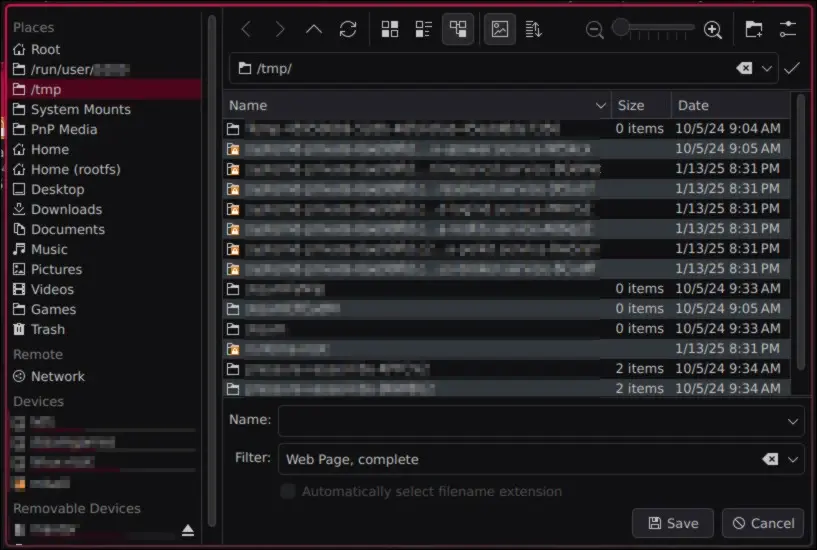What software have you found particularly frustrating or difficult to configure on Linux?
Xserver... Somehow trying to find the magic string of letters and numbers that made your screen work.
Installing Fedora. I had almost nothing to configure, it worked out of the box. How frustrating! I had the whole day planned and now what? Enjoy my free time like a pleb !?!
(/s just in case anyone was wondering)
I still cannot connect to captive portals for public WiFis, eg on train or hotel and I have no idea where the config comes from.
DNS? Resolve.conf? Systemd network manager? WTF?
(Probably for the best though, so I use my phone 5G and not these suss open networks )
If you connect to the network and open firefox, it will display a toast to open the corresponding captive portals page. You can then login through that. Given that your VPN isn't blocking unencrypted connections etc.
Extrapolation of partial knowledge warning
I assume the network advertises a captive portals url and identifies you based on your MAC address.
The config is server-side (router).
I get "limited connection" I think when I try connect or "no internet".
I don't make it to load the portal page...
so maybe I'm not recieving at IP from the network?
I do construction work and travel every week. I've had this problem pop up in the last month when I connect to the hotel wifi. I just open Firefox and type in the default gateway IP and then it takes me to the login page. For whatever reason it stopped opening the page for me.
Isn't it always postfix? Not because of the software, but because of other clients and other servers.
I've had to grapple with pipewire. My old pulseaudio config didn't seem to work and I wanted to migrate to the pw config file format anyway, but I found the pw docs to be highly opaque. You get a thousand solutions for commands online, or tools you can do it visually in, but to apply that config you need to start the tool...
I'm a noob, granted, but there seemed to be a lot of assumed common knowledge that I just don't have. And if I don't even know what I'm missing, it's hard to google for it.
-
Setting up Nvidia runtime for rootless Docker containers in Linux.
-
Resolving port :53 conflict between AdGuardHome (rootless) docker container and Systemd-Resolved.
-
I've been on arch for years, but have recently started pc gaming. Lutris has been surprisingly easy to get working. I have a nintendo switch already and decided I want to try to use the joycons for the computer, don't want to buy gamepads but it gives and alternative to keyboard and mouse. Getting them consistently recognized by bluetooth has been a massive pain, but after searching I've figured out a package that I can install that fixes the issues. In fact, I couldn't find anyone who found a solution to this issue without installing this specific package.
That package is pulseaudio-bluetooth, even though the nintendo joycons do not have an audio jack or capability to receive audio. I've had my audio set up and configured with alsa, and alsa does everything (relating to audio) that I need it to, but pulseaudio-bluetooth requires me to install pulseaudio (duh) and will not work unless I enable the pulseaudio service, which fucks up my alsa config. I've spent a while dicking around trying to get pulseaudio to pretend it doesn't exist except for connecting joycons, but there's always some nuisance popping up. I also tried using a different usb bluetooth controller and plugging them into different usb ports. Given up for the moment and will probably just buy another gamepad and hope it works better without needing pulseaudio-bluetooth.
In all honesty I still don't really know what the hell I'm doing on arch, I originally installed it to learn this stuff better but all I've really learned is how to read documentation well enough to get things working by trial-and-error. I've had a stable system for like ten years now though and I'm too comfortable with it to warrant switching to a friendlier distro, but this specific issue is a pain in the ass.
Trying to configure Sway in NixOS. I gave up and just use KDE Plasma. I do miss using Sway from when I used Arch, though.
I use i3 - Sway is supposed to be 100% compatible with i3 - and I find the configuration file very straightforward. What's different in the version in NixOS?
Wild. I used sway for the first time with Nix since I could rollback a misconfiguration.
Yeah, I got stuck on secrets management. I just could not get network manager to keep my WiFi passwords. I'll probably go back and try again at some point.
XDG portal filechooser for Firefox: the KDE implementation uses Dolphin, which is full of features and I use most of them; the default GTK one is mildly infuriating to use and looks ugly too, but getting the browser to use the portal I want was a nightmare - especially since GTK discontinued the GTK_USE_PORTAL envvar.
The related Firefox config entries make no sense either.Can you explain a bit more about this and how to configure it? When I use FF on gnome, the save dialogue just looks like other dialogues?
I think GNOME's filechooser is the GTK one (never used it so I'm not sure), mine looks like this:
Show
It's entirely possible that Firefox changed and now uses XDG portals by default, I configured it like this a long time ago.
As for how to configure it, I honestly don't know.
It was a combination of messing withwidget.use-xdg-desktop-portalon about:config, and changing XDG envvars and dotfiles; both by following several conflicting Reddit and bbs.archlinux.org posts.widget.use-xdg-desktop-portal.file-picker=1 in about:config should be the only thing you need. @projectmoon@lemm.ee
Yeah I definitely have the default GTK chooser. Guess I have some config playing to do later.
Instructions for changing it here
https://wiki.archlinux.org/title/Firefox#XDG_Desktop_Portal_integration
Pretty much everything is frustrating to configure at first. Then I learn it and it's not so bad. Then I don't use it for a few years, and completely forget how! Back to step 1.
I learned this lesson pretty quick when working in IT.
It's not always feasible to document everything as it happens, but I definitely learned to do so if I had the time and means to while I was doing the thing.
Just started at a new company with 0 documentation, they're super psyched that I've actually been writing down all their processes/procedures/configurations etc. as they explain them to me/as I work with them.
If you want to get into doing it, I found searching through a lot of note taking applications until I found something I really liked helped me remember to go do it regularly.
For FOSS stuff a lot of people like Joplin, and I could certainly recommend it. Personally though, I really like Obsidian for its backlinking and graph view features, but it's not open source.
Furthermore, just carrying around a notebook and a pen everywhere you go as a habit helps a lot. I got into the habit of doing this by maintaining a personal journal for some time. For writing effective notation on paper which can easily be digitized, I would recommend looking into "bullet journaling" methods, and again, finding a notebook and pen that you really quite like, helps a lot to make the experience enjoyable and develop it as a skill.
I thought this was pretty solid talk on SElinux https://www.youtube.com/watch?v=_WOKRaM-HI4
This.
I tried it some time ago and I had to format the SSD because the operating system became unusable.
Jellyseer in docker. It won’t accept my jellyfin login. It just spins and spins. But I plan to use it locally. And everyone says you have to sign in initially not local? I don’t know. I’m annoyed with it and gave up for now.
I think this means it can't actually see your jellyfin instance, you need to use your computer's local network ip instead of localhost if the two containers aren't in the same pod via a docket compose file. I've had this issue before.
Nah. It’s on the same docker compose file through portainer. And I’ve been using the local ip. I never use local host for some reason lol
You probably need to use localhost lol or the name of container set in the docker compose file. Both might work, I forget
I’ll try name of container. I have tried localhost in my troubleshooting. It loads the login screen fine. But just spins for 3 minutes then errors out at some point just like the IP lol I’ll be working on it when I get home later after this flight and I’ll let you know if I solve my struggles lol
hostapd. I have no idea how you’re supposed to figure out the 50 or so options OpenWrt outputs for an AX card that I just ended up copying. And why doesn’t it detect those on its own?
Motion on my RPI. I didn't want it to save videos or photos, so I turned it off in the config. But it still saved them. So I tried a few other places in the config to turn it off, but nothing worked and I'd run out of space within a day. So I changed the save directory to /dev/null.
Then I tried to upgrade the pi, and the new version of motion has a different config, incompatible with the old one. So I'm running the old one.











